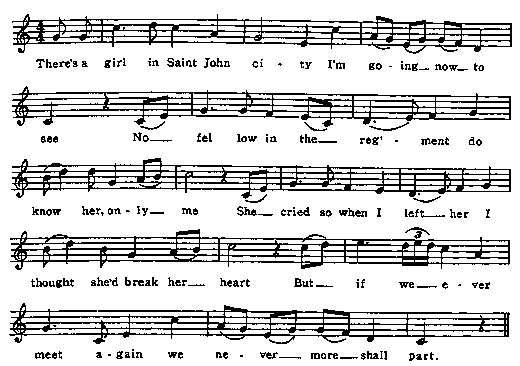Folk & Traditional Music of the Western Continents
The folk & traditional music of Europe, Africa & the Americas explored.
| Share page | Visit Us On FB |
|
THE GERMANIC PEOPLES 61 |
||
|
|
||
 |
||
|
|
||
|
example 4-5. English folk song, "Girls of Newfoundland," collected in Newfoundland by MacEdward Leach, transcribed by Bruno Nettl.
ures have, respectively, 5, 5, 6, 5, 7, 6, 6, and 8 eighths. Example 4-5 also has similar structure to Example 4-3, but the length of the text is doubled over that in Example 4-4, so there are four lines of four feet, and four of three feet. When this kind of stanza occurs, it is usually translated, musically, into four long lines whose rhythm is
 form is more common in the broadside ballads than in the older songs such as the Child ballads.
British folk song is frequently said to be modal, but the great majority of the songs fall into the major or Ionian mode. There are also a good many in the Mixolydian (major with lowered seventh) mode, in Dorian (minor with raised sixth), and in Aeolian (natural minor). The other modes are not common. Our three examples, however, are all major. Some modulation may occur (though this is often hard to identify because the music is monophonic) as in Example 4-3, in which the first two phrases seem to have G for a tonic, but the last one, D.
Much has also been said of the pentatonic nature of English folk |
||